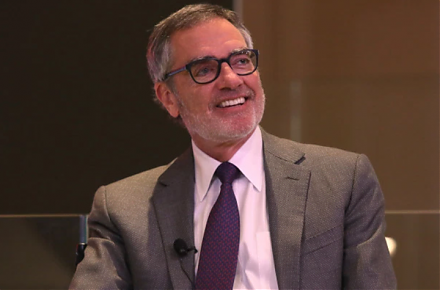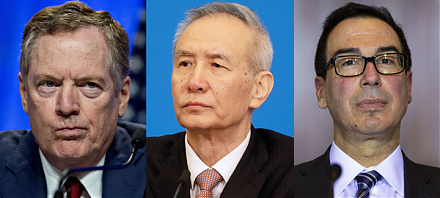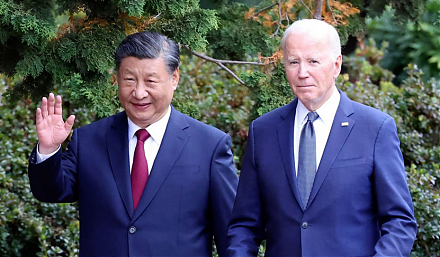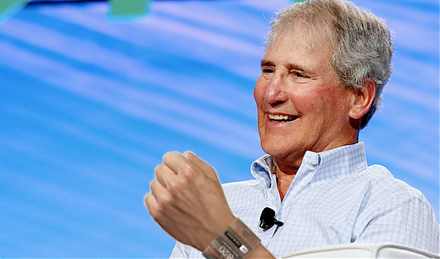

2020-10-20 09:36:00 Tue ET
lean startup distinctive capabilities leadership competitive advantages okr team leaders specialists advisors iterative continuous improvements culture changes agility senior managers growth core business operations execution reinvention disruptive innovation megatrends digitization servitization
Agile lean enterprises remain flexible and capable of reinvention in light of new megatrends such as digitization and servitization.
Shane Cragun and Kate Sweetman (2016)
Reinvention: accelerating results in the age of disruption
Change is often constant in the wider business context. Agile lean enterprises must remain flexible and capable of reinvention. From time to time, proactive strategies are better than reactive strategies. In the current disruptive business environment, one critical success factor requires anticipating the next wave of structural changes and megatrends in order to adapt to new customer demands in a proactive manner. Both business leaders and senior managers must focus on who they are (instead of what they try to accomplish in due course) in terms of character and camaraderie. Agile lean enterprises often make the most of both business strengths and talents to adapt to external threats, competitive forces, or several other market conditions. This continuous adaptation becomes the core business agility factor and is hence more important than continuing to be competent at specific high-skill tasks.
A reinvention methodology can sometimes offer the foundation for better structural change management. By following fundamental steps within a broader reinvention framework, both business leaders and senior managers can better manage fresh changes in external threats, competitive forces, and several market circumstances. We now live in the new age of disruption innovation. To secure competitive moats and first-mover advantages, all business leaders, senior managers, and their team members must move beyond reacting to structural changes and megatrends such as digitization and servitization. Digitization often refers to fresh structural changes in the technical opportunities for business organizations to develop new products, services, solutions, and customer interactions. Servitization often refers to shifting customer preferences and unique value propositions that emphasize both product feature co-creation and customization. These megatrends now span and balance the joint product and service orientation. In this context, both business leaders and senior managers must anticipate new structural changes and megatrends in order to act ahead of time. The law of inadvertent consequences counsels caution when push comes to shove.
The modern age of disruptive innovation continues to cause global shockwaves.
In recent decades, the world has experienced at least 20 global shockwaves that contribute to the modern age of ubiquitous disruption worldwide. Good examples of these global shockwaves include the Global Financial Crisis of 2008-2009, the European sovereign debt debacle, and the recent rampant corona virus pandemic outbreak. Most of the global shockwaves relate to high-end technology, business management, economic reorganization, global value competition, and geopolitical impasse. The modern information technology advances help boost computational capacity and productivity for many knowledge workers in the niche fields of Internet search, mobile connectivity, software, e-commerce, cloud service provision, social media, and so forth. Also, new business methods often help manage core people, key processes, and operations for better efficiency and profitability. Moreover, Wall Street fear and greed can transmit volatile structural changes and financial market risks to many other industrial economies via trade, cross-border capital, and global supply chain entrenchment. Further, fierce product market competition causes the integrative expansion from regional trade blocs to global markets. In addition to the above considerations, geopolitical risks manifest in the form of perennial tensions among nuclear nations such as Iran and North Korea as well as several mid-east OPEC countries. In effect, the geopolitical risks often cause unforeseen asset price fluctuations for stocks, bonds, mutual funds, currencies, and commodities such as gold, silver, and oil etc.
Both business leaders and senior managers must often better understand the root causes of these global shockwaves in order to anticipate future shockwaves. This anticipation helps empower most business partners to address the global concerns in a more cost-effective manner. From time to time some shockwaves can combine to create a perfect storm of disruption worldwide. For instance, many multinational corporations outsource non-core business operations to offshore call centers such as China and India for better cost control and product differentiation etc. This third-party service provision often results in massive layoffs, sudden spikes in domestic unemployment, and significant structural changes in the broader business context. Further, the recent rampant Covid-19 pandemic outbreak causes some key global central banks and treasuries to offer both substantial monetary and fiscal stimulus in the face of zero interest, low inflation, high unemployment, and subpar economic output worldwide. For agile lean enterprises to successfully navigate this modern age of global disruption, both business leaders and senior managers must develop their own distinctive capabilities and unique value propositions to adapt internally to the less predictable structural shifts and megatrends in the external environment. Continuous adaptation becomes a vital agility factor in both business success and sustainable profitability.
Several agile lean enterprises fail and lose relevance often due to their inability to adapt fast enough to structural shifts, megatrends, and external competitive forces in the broader business context. Some large corporations can be quite vulnerable to disruptive innovations and megatrends such as digitization and servitization. At these business organizations, both business leaders and senior managers tend to be metaphorically blind due to their conceit and arrogance; dismissal of the recent rise and success of other competitors; blind faith in ancient institutional knowledge about what best satisfies and even exceeds customer demands; and some oblivion to negative comments, constructive criticisms, and emergent problems. Most agile lean enterprises overcome these fears and failures through business reinvention. This business reinvention empowers both business leaders and senior managers to embrace key external threats and competitive forces as part of the ongoing core business operations. These business partners often leverage valid and reasonable predictors of both megatrends and structural changes to help better anticipate the next global disruption. Further, some business partners even strategically choose to lead disruptive innovations instead of continuing to be complacent as victims of the alternative disruptive innovations from rivals.
Both business leaders and senior managers must learn to reinvent their business models with no or little interference. Apple strives to challenge the status quo with great mobile devices such as iPhones and iPads. Facebook tries to connect people to make the world become better and safer with greater mobile social movements. Microsoft designs and refines software suites for every PC user. Amazon attempts to facilitate online sales, mobile payments, and cloud services for individual buyers, third-party sellers, and small-to-medium enterprises etc. Google tries to monetize Internet search and cloud software to bring information to global users at the click of a button. Tesla applies lean methods to produce electric cars with better features for auto lovers. SpaceX collaborates with NASA and U.S. Defense Department to send astronauts to the International Space Station with new scientific experiments from month to month. All these successful business organizations learn from major mistakes, errors, and even epic failures etc before these companies can carve out a fantastic future for their users, customers, and most other stakeholders. Humble servant-leadership, good and strong will, perseverance, lean design, and iterative continuous improvements become essential and important in this context.
Business reinvention often helps ensure better structural change management.
In the modern age of global disruption, consistent business performance depends on constant reinvention or quantum business growth acceleration. The reinvention formula is a continuous flow of 5 essential elements for effective business changes: dissatisfaction, focus, alignment, execution, and leadership. In terms of customer dissatisfaction, there must be a powerful and essential need for structural change, constant reinvention, and organic customer growth. Further, agile lean enterprises must strive to focus on their unique value propositions, distinctive capabilities, and core competences to work toward the future steady state. Both business leaders and senior managers must better align organizational elements such as personnel, finance, and capital equipment etc for practical execution. With a high-performance corporate culture, all team members must execute their comprehensive game plan to achieve pragmatic work outcomes. Both business leaders and senior managers must be responsible for core business processes, operations, and work outcomes. In effect, this collective accountability mechanism connects team efforts and work streams to humble servant-leadership. The business reinvention formula requires that the ultimate multiplier effect of these 5 major elements (dissatisfaction, focus, alignment, execution, and leadership) exceeds the intrinsic cost of change with all the tangible and intangible team endeavors. Sometimes both business leaders and senior managers must reconsider bold strategic trade-offs, choices, and decisions to help ensure that business reinvention comes to fruition in due course. The main paradigm shift often requires that both business leaders and co-founders focus on corporate value creation (instead of immediate gratification or broader stakeholder value maximization). Long-term gains can outweigh short-term pains.
Business reinvention requires visionary business leaders and senior managers to see far into the future to predict work outcomes and disruptive innovations. From time to time, this reinvention requires a primary paradigm shift from the traditional school of thought to a brand-new business vision. For instance, Saudi Arabia relies on actionable business insights into the national security of oil reserve depletion in recent decades. The most profitable corporation worldwide, Saudi Aramco, builds a new IPO to raise at least $2 trillion for the Saudi Arabian sovereign wealth fund to invest in high-tech enterprises such as Apple, Alibaba, Amazon, Facebook, Intel, Microsoft, Oracle, Tesla, Twitter, Uber, and so forth. This stock investment portfolio diversification not only ameliorates the national security issue for Saudi Arabia, but also helps enhance the Sharpe ratio of average return to standard deviation (signal to noise ratio).
The long-term business vision often requires confronting the brutal facts. Business organizations that can confront the brutal facts can take proactive steps to ensure both business success and sustainable profitability well into the future by steering their disruptive innovations instead of waiting for structural shifts and megatrends to happen in unforeseen circumstances. Business leaders, senior managers, and their team members must perform honest reinvention assessments to score in key areas that often indicate the essential need for reinvention. Both business leaders and senior managers can share their results with most relevant team members to garner team support with collective accountability over time. In this context, it can be important for team members to better assess their need for reinvention. Iterative continuous improvements and product feature enhancements becomes both vital and relevant in light of both internal team efforts and external competitive forces.
Successful business reinvention requires a holistic and systemic roadmap.
From time to time, successful business reinvention requires a holistic and systemic approach. The reinvention roadmap can serve as a useful tool for driving systemic and sustainable changes. In essence, this business reinvention roadmap can help formulate actionable strategic insights and tactical solutions for dynamic transitions. The business reinvention formula helps inform this roadmap of 7 major story lines. In response to both customer discontent and dissatisfaction, the business case for change must be clear and powerful enough to elicit full engagement. Both business leaders and senior managers must assess internal core competences and external competitive forces to drive the strategic business design choices. Just as corporate culture drives objectives and key results (OKR), several business partners identify, communicate, and then encourage the ideal team behaviors that lead to the steady state of work execution. Both business leaders and senior managers contribute to the strategic design, team accountability, and execution of actionable work insights. The strategic design choices help iteratively enhance the desirable work outcomes. In effect, these design choices and their iterations must exceed the cost of change. Business partners and team members adapt and refine this reinvention roadmap until it embeds the full gamut of key desirable results.
Malala Yousafzai, a 14-year-old Pakistani girl, reinvents herself from a school girl to a Nobel Peace Laureate. Her bold leadership and courage turn her tragic death threat into a positive force for change. Her global influence represents the essence of reinvention. Resilience grows at the heart of her gradual transformation and so provides the foundation for her reinvention. From time to time, resilience empowers people and business organizations to forge ahead after setbacks and failures. We develop our own resilience, overcome setbacks, and then improve our reinvention efforts by embracing positive assets and strengths to hone our creative skills in the hot pursuit of cause-and-effect relations in the broader business context.
This analytic essay cannot constitute any form of financial advice, analyst opinion, recommendation, or endorsement. We refrain from engaging in financial advisory services, and we seek to offer our analytic insights into the latest economic trends, stock market topics, investment memes, personal finance tools, and other self-help inspirations. Our proprietary alpha investment algorithmic system helps enrich our AYA fintech network platform as a new social community for stock market investors: https://ayafintech.network.
We share and circulate these informative posts and essays with hyperlinks through our blogs, podcasts, emails, social media channels, and patent specifications. Our goal is to help promote better financial literacy, inclusion, and freedom of the global general public. While we make a conscious effort to optimize our global reach, this optimization retains our current focus on the American stock market.
This free ebook, AYA Analytica, shares new economic insights, investment memes, and stock portfolio strategies through both blog posts and patent specifications on our AYA fintech network platform. AYA fintech network platform is every investor's social toolkit for profitable investment management. We can help empower stock market investors through technology, education, and social integration.
We hope you enjoy the substantive content of this essay! AYA!
Andy Yeh
Chief Financial Architect (CFA) and Financial Risk Manager (FRM)
Brass Ring International Density Enterprise (BRIDE) ©
Do you find it difficult to beat the long-term average 11% stock market return?
It took us 20+ years to design a new profitable algorithmic asset investment model and its attendant proprietary software technology with fintech patent protection in 2+ years. AYA fintech network platform serves as everyone's first aid for his or her personal stock investment portfolio. Our proprietary software technology allows each investor to leverage fintech intelligence and information without exorbitant time commitment. Our dynamic conditional alpha analysis boosts the typical win rate from 70% to 90%+.
Our new alpha model empowers members to be a wiser stock market investor with profitable alpha signals! The proprietary quantitative analysis applies the collective wisdom of Warren Buffett, George Soros, Carl Icahn, Mark Cuban, Tony Robbins, and Nobel Laureates in finance such as Robert Engle, Eugene Fama, Lars Hansen, Robert Lucas, Robert Merton, Edward Prescott, Thomas Sargent, William Sharpe, Robert Shiller, and Christopher Sims.
Follow AYA Analytica financial health memo (FHM) podcast channel on YouTube: https://www.youtube.com/channel/UCvntmnacYyCmVyQ-c_qjyyQ
Follow our Brass Ring Facebook to learn more about the latest financial news and fantastic stock investment ideas: http://www.facebook.com/brassring2013.
Free signup for stock signals: https://ayafintech.network
Mission on profitable signals: https://ayafintech.network/mission.php
Model technical descriptions: https://ayafintech.network/model.php
Blog on stock alpha signals: https://ayafintech.network/blog.php
Freemium base pricing plans: https://ayafintech.network/freemium.php
Signup for periodic updates: https://ayafintech.network/signup.php
Login for freemium benefits: https://ayafintech.network/login.php
If any of our AYA Analytica financial health memos (FHM), blog posts, ebooks, newsletters, and notifications etc, or any other form of online content curation, involves potential copyright concerns, please feel free to contact us at service@ayafintech.network so that we can remove relevant content in response to any such request within a reasonable time frame.
2018-11-03 11:36:00 Saturday ET

Apple adds fresh features to its new iPad Pro and MacBook Air in addition to its prior suite of iPhone XS, iPhone XS Max, and iPhone XR back in September 20
2019-02-15 11:33:00 Friday ET

President Trump is open to extending the March 2019 deadline for raising tariffs on Chinese imports if both sides are close to mutual agreement. These bilat
2017-12-17 11:41:00 Sunday ET

Warren Buffett points out that it is important to invest in oneself. Learning about oneself empowers him or her to lead a meaningful life. This valuable inv
2017-11-17 09:42:00 Friday ET

The Trump administration garners congressional support from both Senate and the House of Representatives to pass the $1.5 trillion tax overhaul (Tax Cuts &a
2024-02-05 11:26:00 Monday ET

China poses new economic, technological, and military threats to the U.S. and many western allies. In the U.S. government assessment, China poses new eco
2020-11-03 08:30:00 Tuesday ET

Agile lean enterprises break down organizational silos to promote smart collaboration for better profitability and customer loyalty. Heidi Gardner (2017